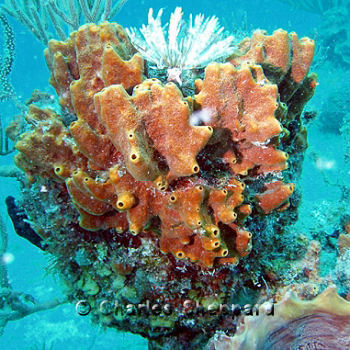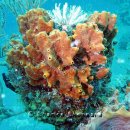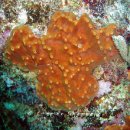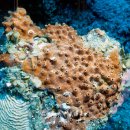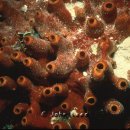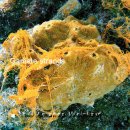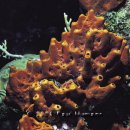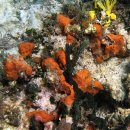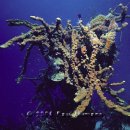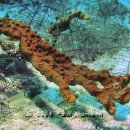| Common names: |
Brown encrusting octopus sponge |
| Growth Form: |
Thick encrusting at least 1 cm thick, to irregular interconnected encrusting lobes, globular masses, fused groups of conical to chimney-like tubes, or irregular branches up to 35 cm long and 3 cm across. |
| Surface: |
Smooth, finely porous (with numerous fine perforations rather than sponge-like) or finely rugose; sometimes slimy; corrugated out of water. |
| Color: |
Usually orange-brown; also yellow-orange, orange, yellowish-brown or red-orange outside; yellow to cream inside. |
| Consistency: |
Firm, brittle. |
| Exudate: |
May release some mucus. |
| Oscules: |
Flush or elevated on conical lobes or tubes, 2.5-7 mm across, with a yellow collar membrane; sometimes surrounded by fine radiating grooves; evenly spaced, scattered or in rows that may be fused into low ridges. |
| Skeletal Components (Spicules, Fibers): |
Two kinds of megascleres: 1) slightly curved rods with 1 gently tapered pointed end and one blunt rounded end (style), 223-400 x 2-24 μm; often bent close to the blunt end, which may be slightly swollen; 2) smaller slightly curved styles covered with irregular fine spines from the middle to the pointed end (acanthostyles), 105-190 x 3.3-9.5 μm, with the blunt end abruptly bent and a rosette of longer fine spines near the pointed end. Spongin cements spicules together but does not form visible fibers. |
| Skeletal Architecture: |
Projections of the interior skeleton support an organic dermis at the surface. Interior skeleton consists of ascending plumose spicule tracts 40-100μm across (2-5 styles across), separated at most by 260 μm, that diverge and radiate toward the surface. Both styles and acanthostyles project outward from the tracts. Projecting spicules and tracts appear to form an irregular meshwork. |
| Ecology: |
On coral reefs and hard bottoms; also reported from lagoons in Colombia. |
| Distribution: |
South Florida and throughout the Caribbean to at least 30 m depth. |
| Notes: |
Zea (1987) does not recognize the three subspecies in Wiedenmayer (1977). Ectyoplasia ferox may be mistaken for some growth forms of Cliona varians or Svenzea zeai, but it is typically much more orange than the former with yellow oscule rims, and the latter is uniformly purplish brown and soft. |
| References: |
Zea (1987). |
| Similar species: |
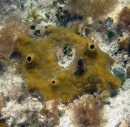
Cliona varians |
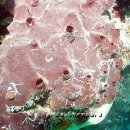
Svenzea zeai |
|
